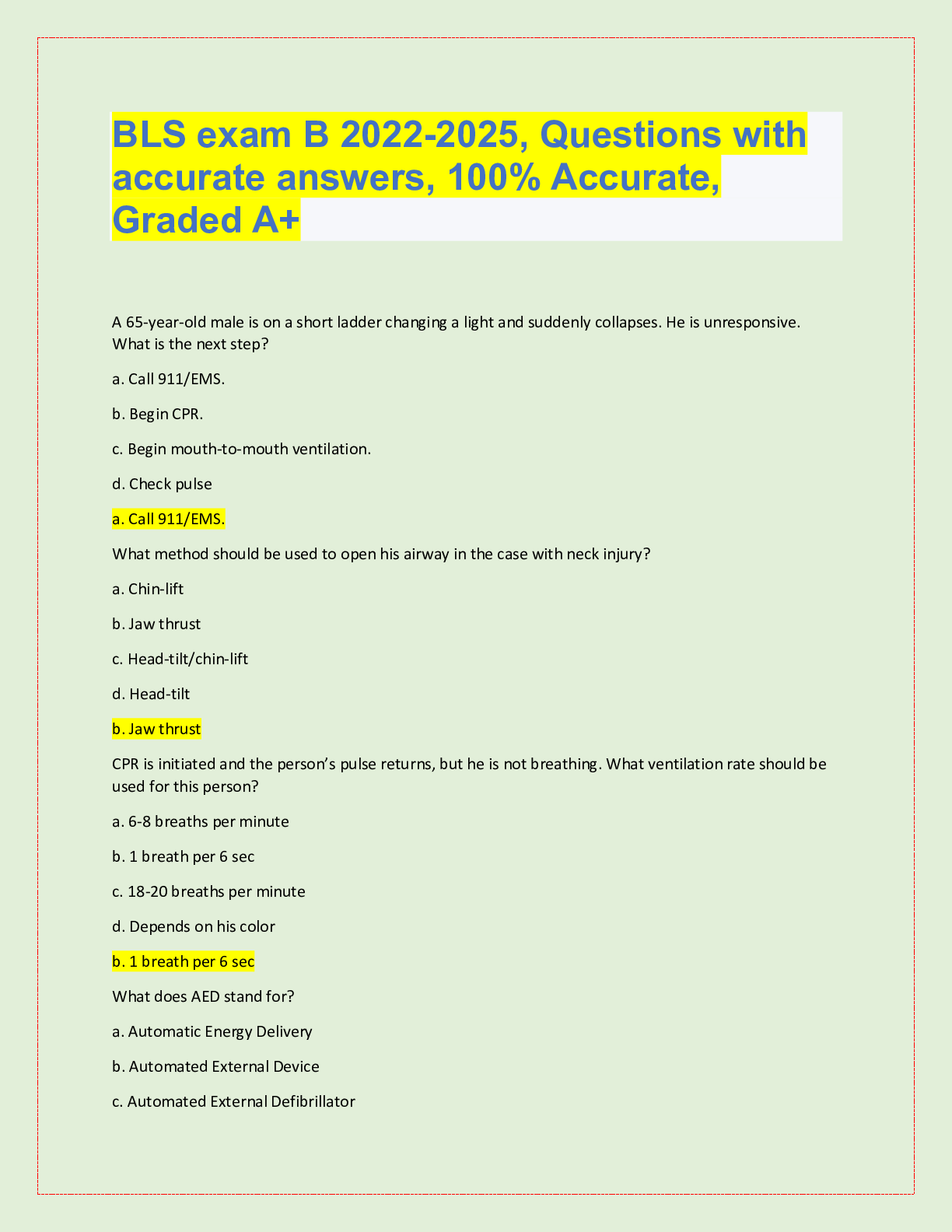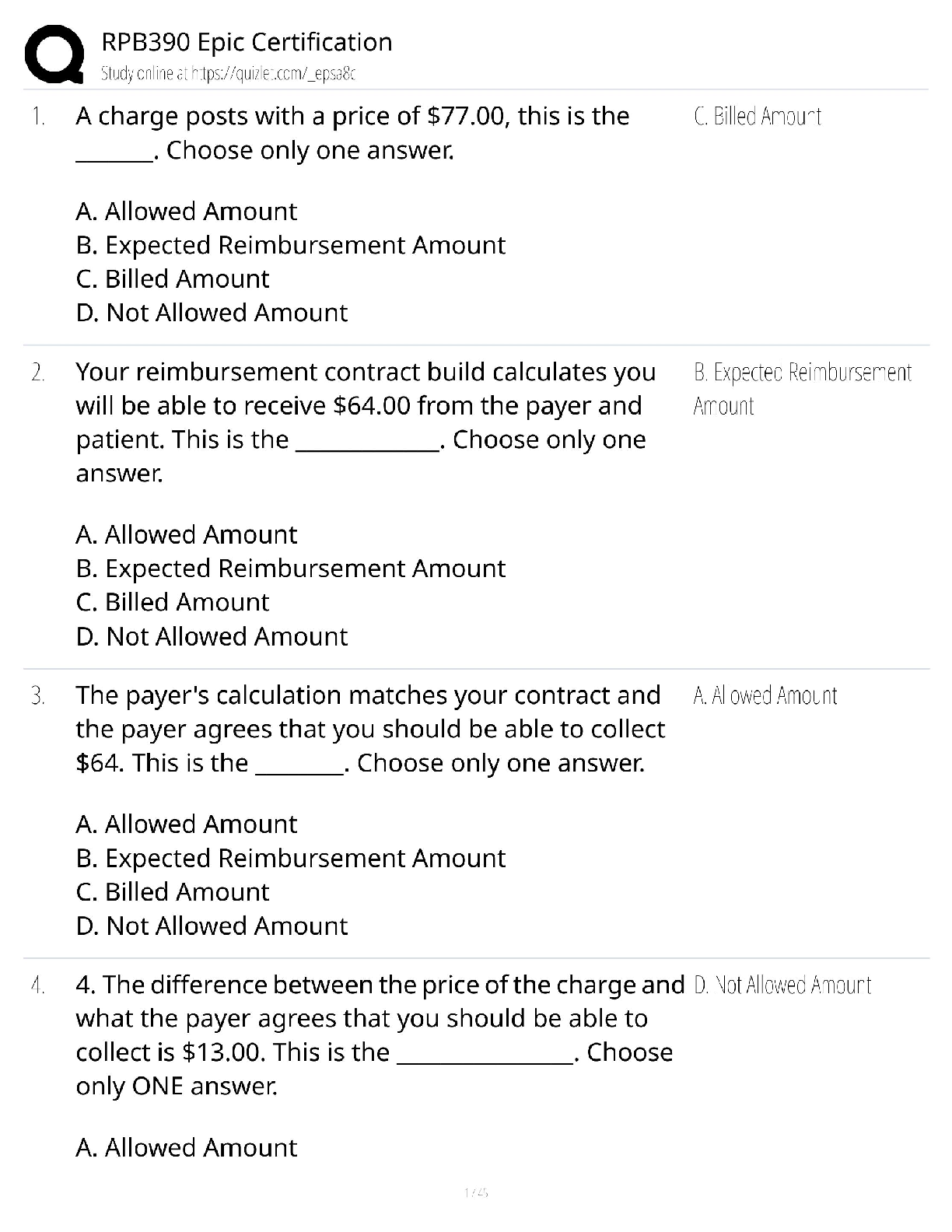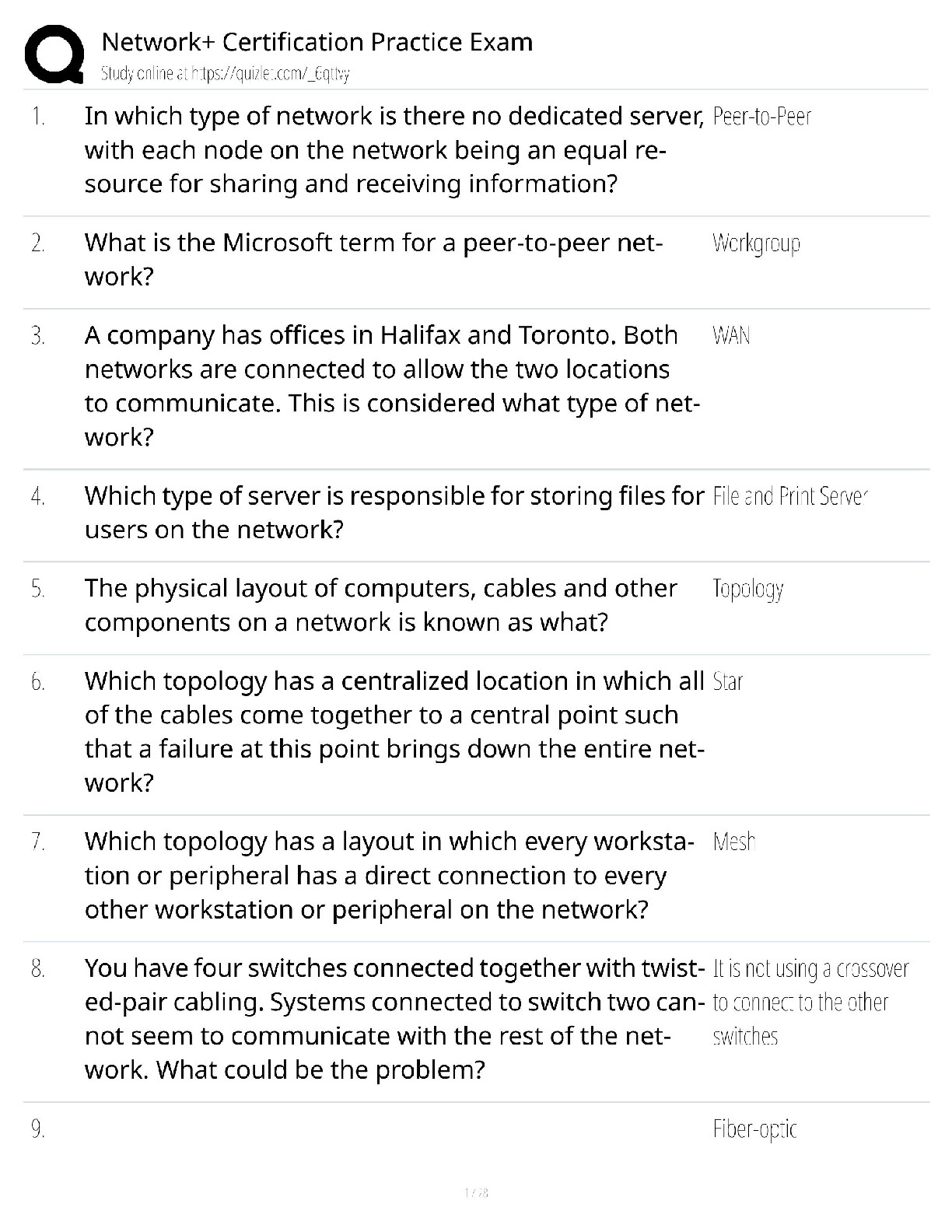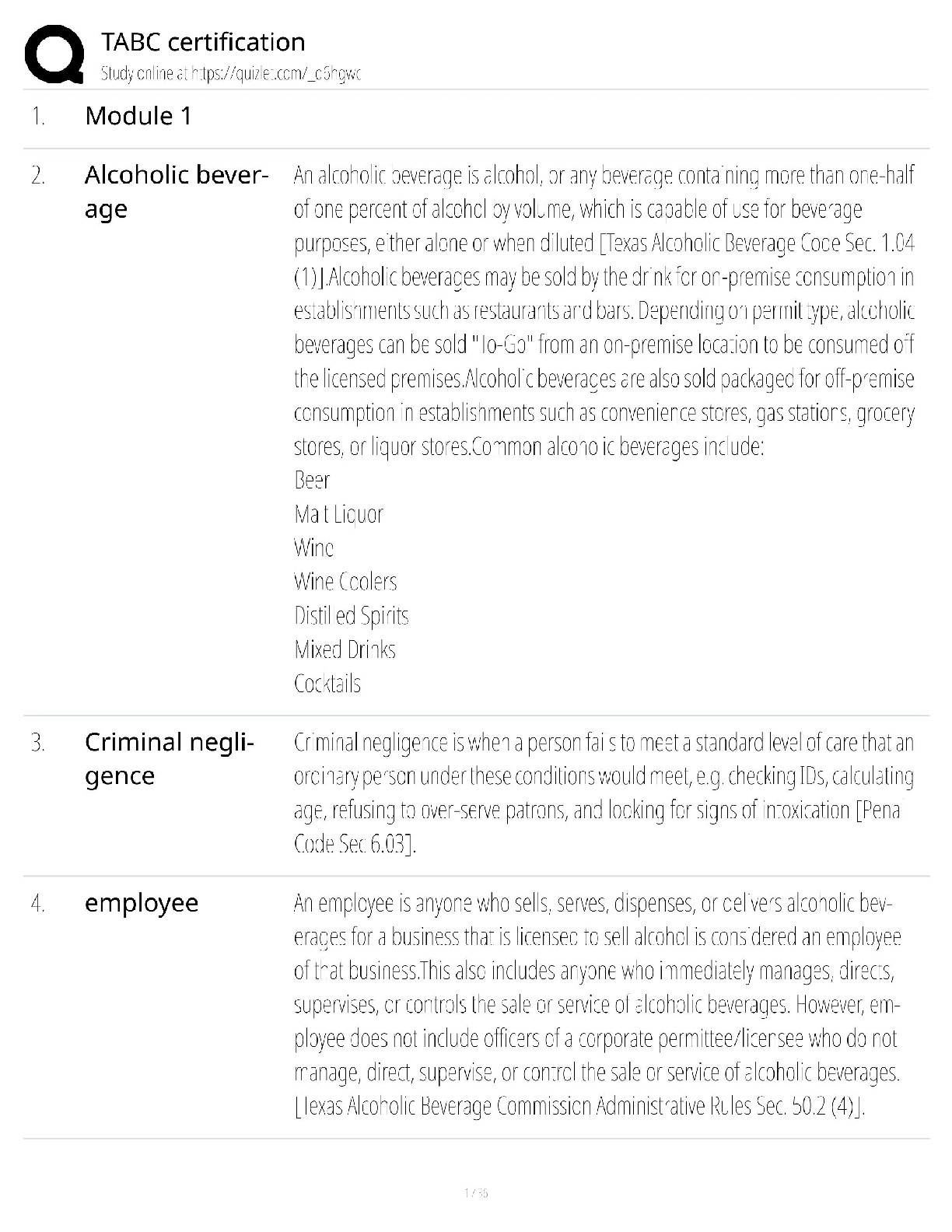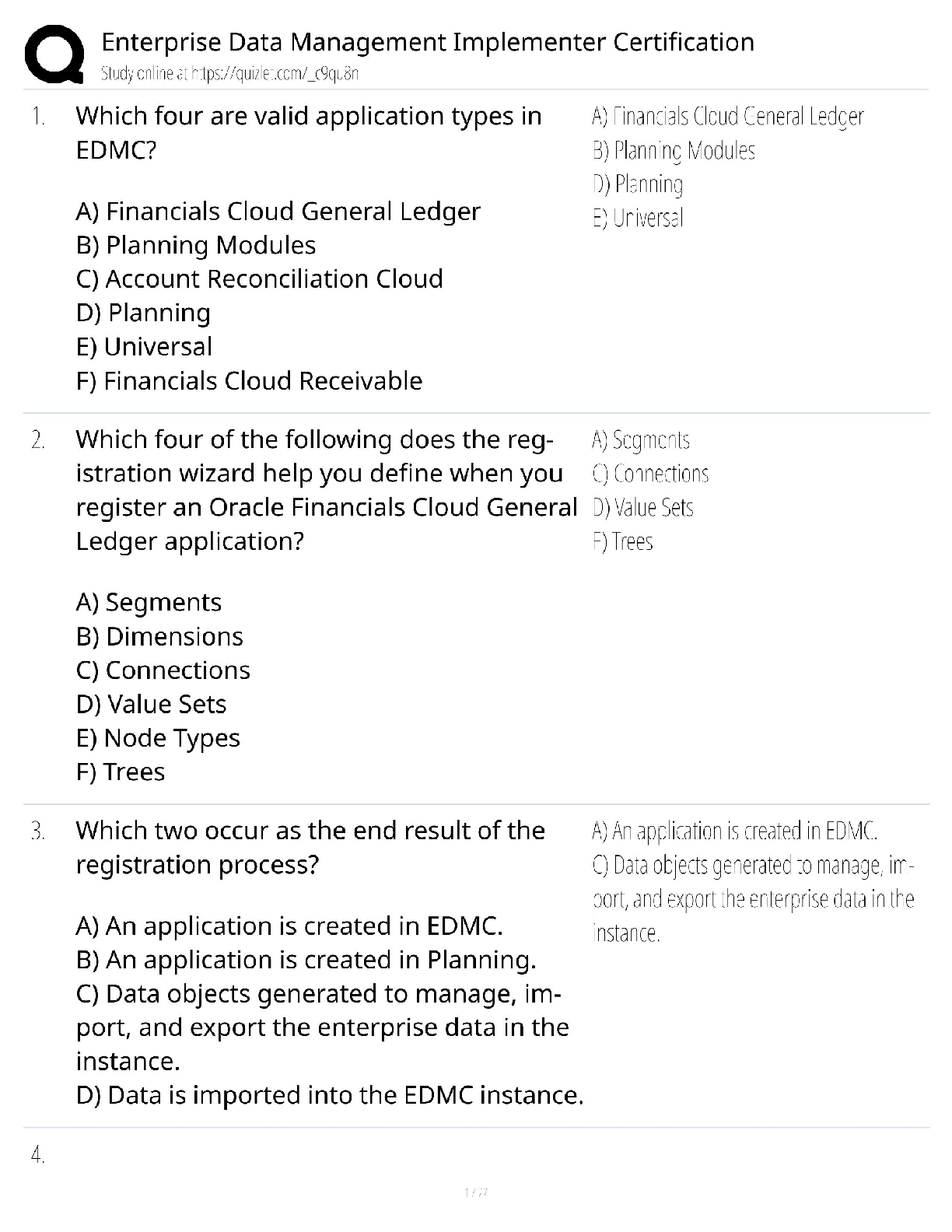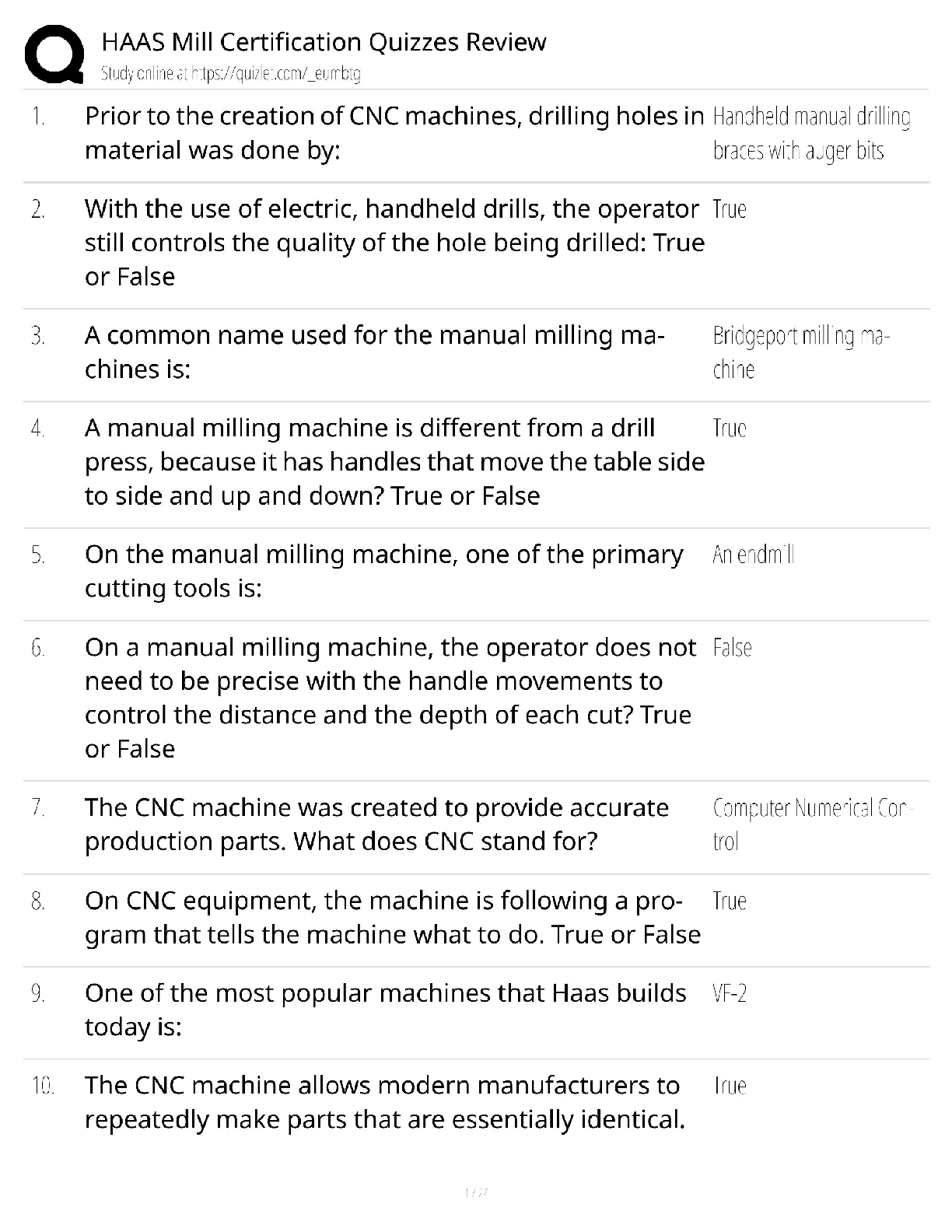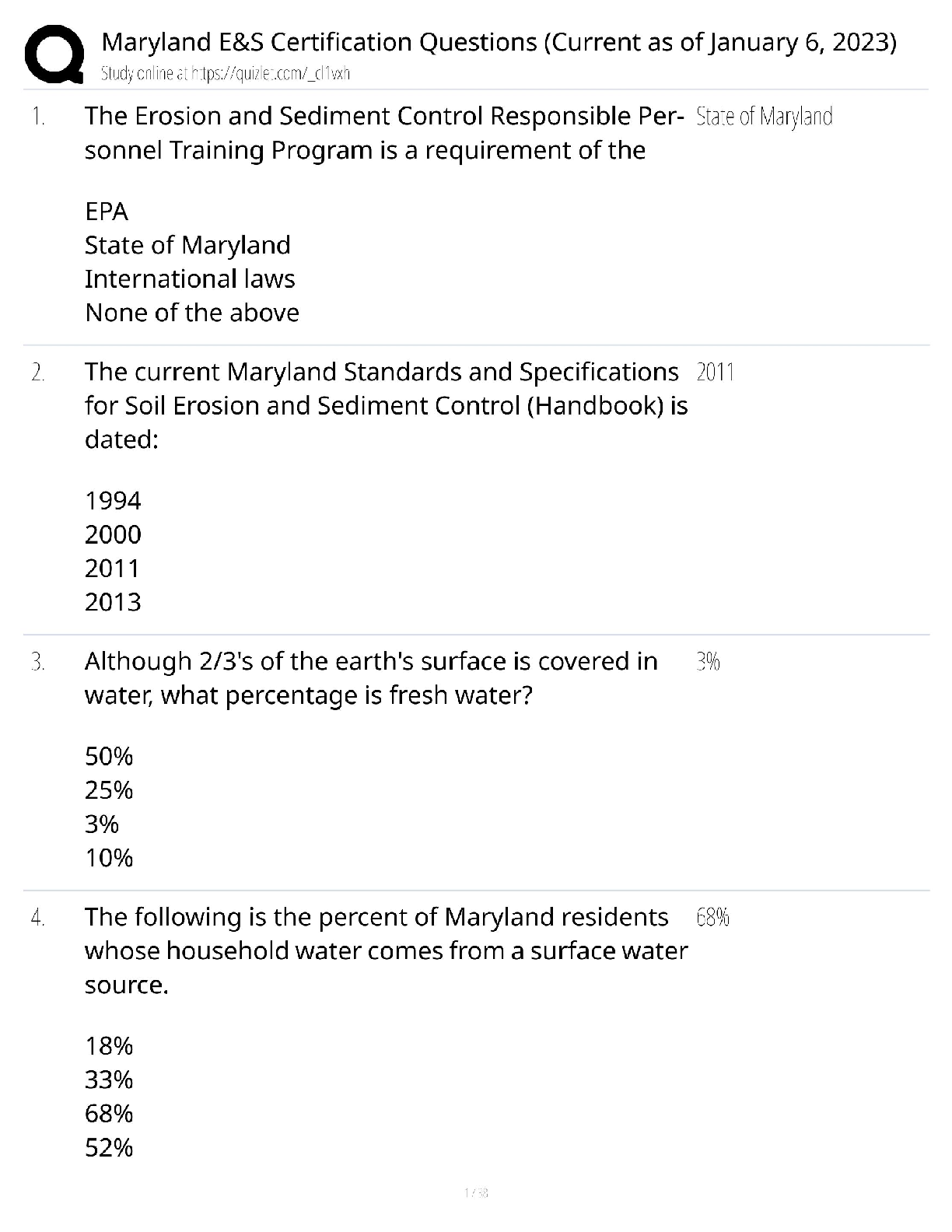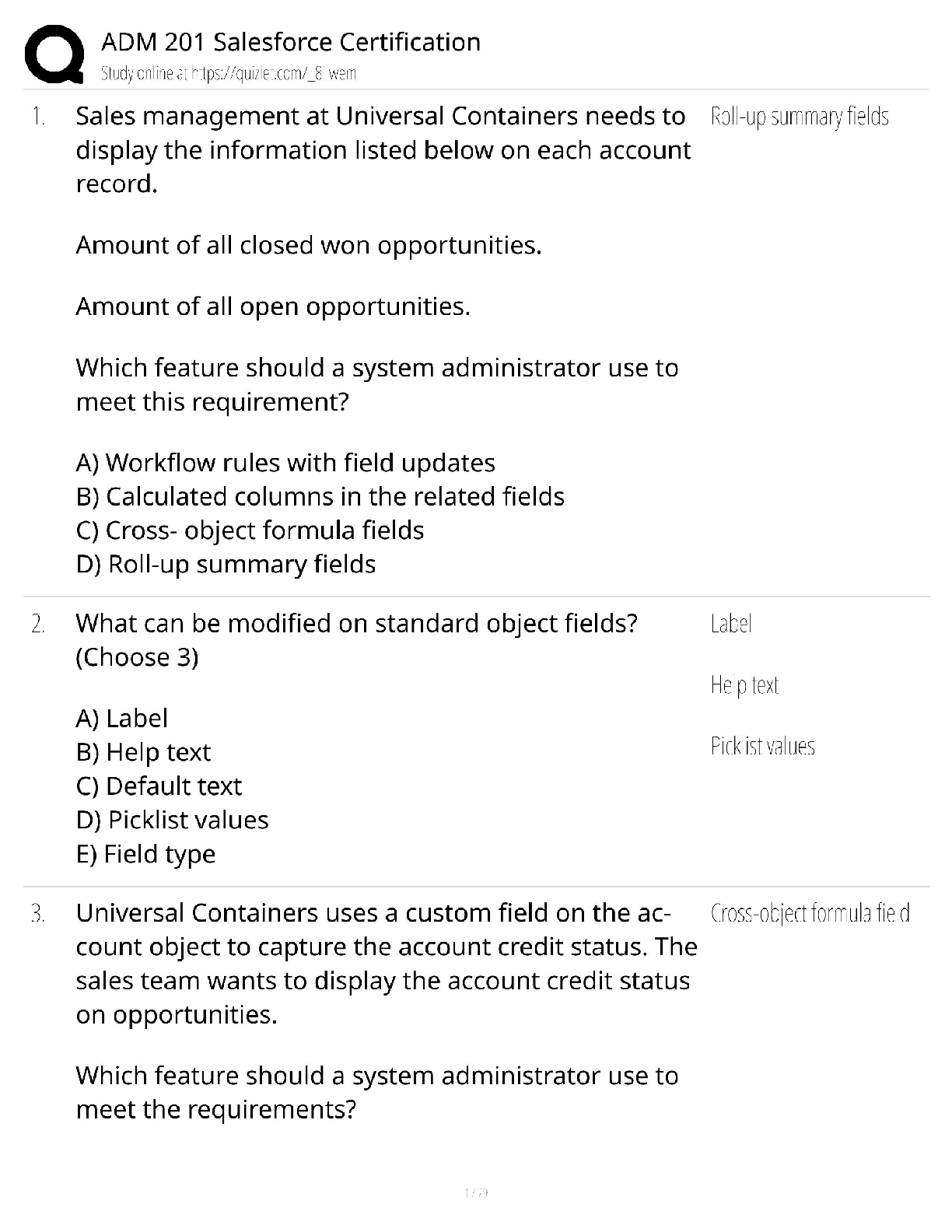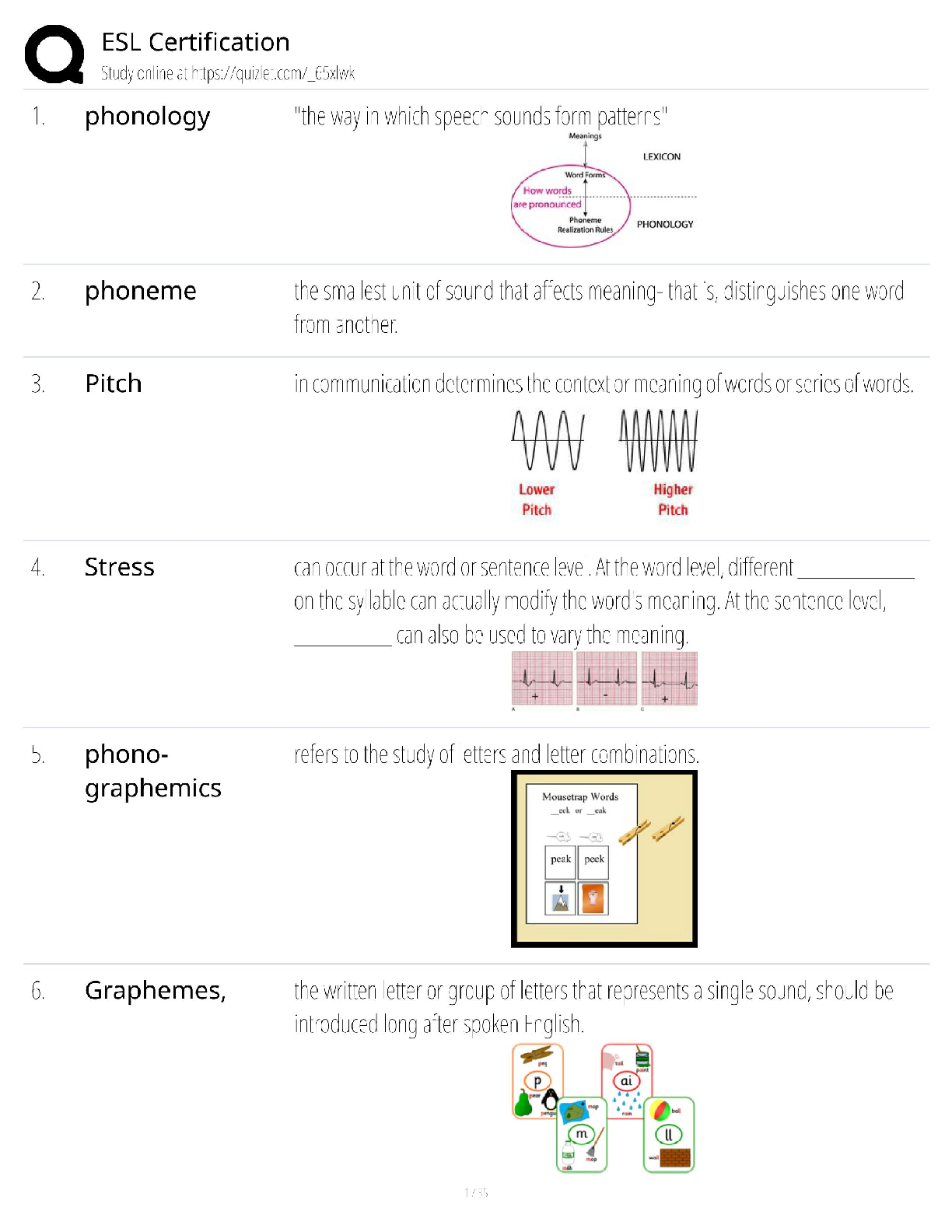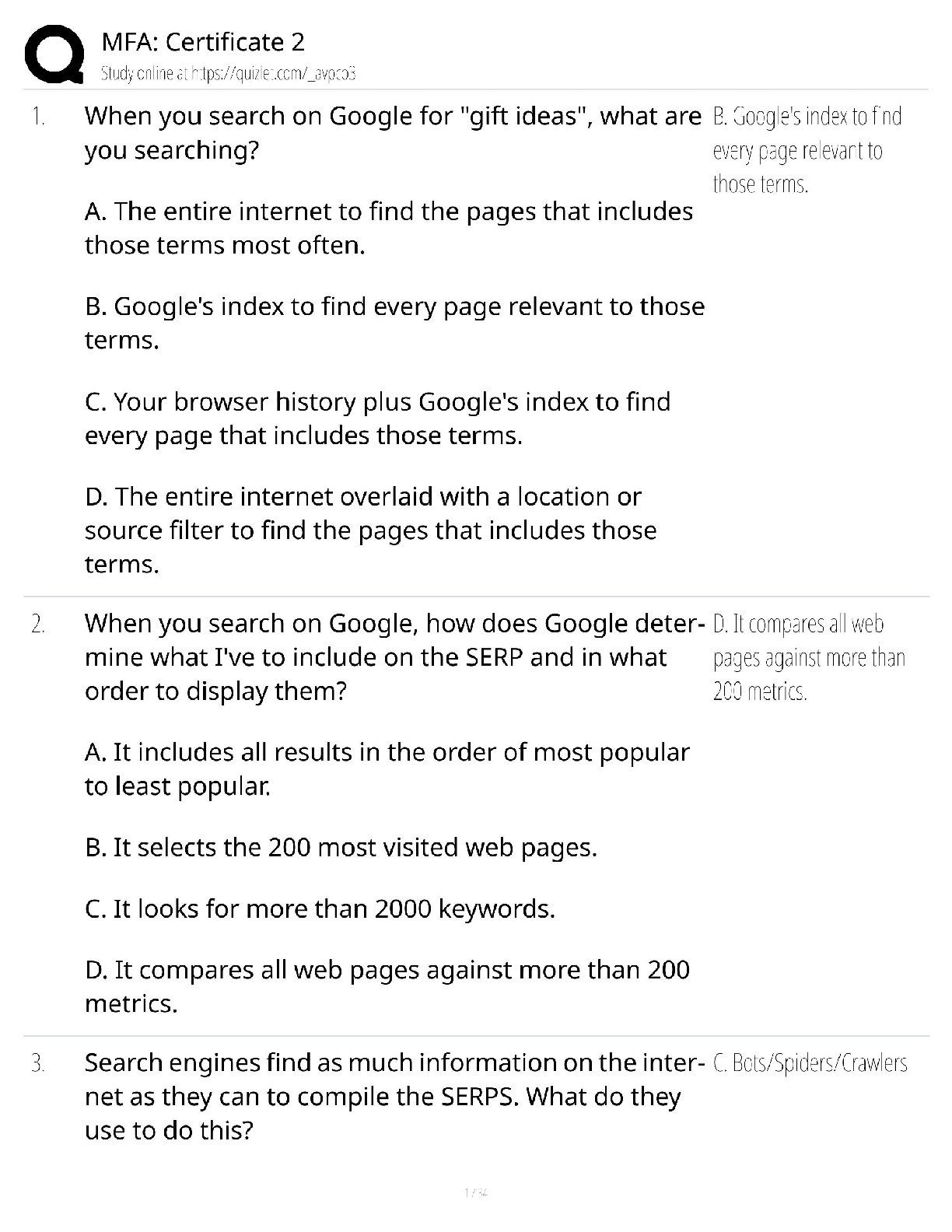Military Science > QUESTIONS & ANSWERS > MCCC Final Comprehensive Exam Questions and answers, 100% Accurate, graded A+ (All)
MCCC Final Comprehensive Exam Questions and answers, 100% Accurate, graded A+
Document Content and Description Below
MCCC Final Comprehensive Exam Questions and answers, 100% Accurate, graded A+ Troop leading procedures - ✔✔-1. Receive the Mission 2. Issue a warning order 3. Make a tentative plan 4. Start ... necessary movement 5. Conduct Reconnaissance 6. Complete the plan 7. Issue the complete order 8. Supervise Timeline types - ✔✔-- Higher, operations, enemy, light/weather, planning Principles of Joint ops - ✔✔-• Mass, objective, offensive, simplicity, economy of force, maneuver, unity of command, security, surprise, restraint, perseverance, legitimacy Unified Land Ops Tenets - ✔✔-- Flexibility, integration, lethality, adaptability, depth, synchronization Unified Land Ops Foundations - ✔✔-- Initiative, decisive action, army core competencies, mission command Steps of MDMP - ✔✔-1. Receive the Mission 2. Mission analysis-brief 3. COA DEV 4. COA Analysis 5. COA Comparison 6. COA Apprroval 7. Orders Production 1. Receive the mission - ✔✔-• WARNO 1 o Type of operation. o General Location of mission. o Initial Operational Timeline o Reconnaissance/Movement to initiate • Commanders initial guidance 2. Mission analysis-brief - ✔✔-• Approved mission statement • Initial commander's intent • Initial CCIRs & EEFIs • Initial commander's planning guidance • Updated IPB products and running estimates • Warning order 2 • IC plan • SITEMP/THREATTEMP/EVENTEMP • Identified hazards • Initial timeline and task org 3. COA Development - COA DEV brief - ✔✔-• Commanders selected COA's for war gaming • Commanders refined planning guidance: o War-gaming guidance o Evaluation Criteria • Updated running estimates and IPB products • Updated assumptions 4. COA Analysis - ✔✔- 5. COA Comparison - ✔✔- 6. COA Approval - COA decision brief - ✔✔-• CDR's Final Planning Guidance o Refined Commander's Intent o New CCIRs to support execution o Final Risk Assessment • WARNO 3 7. Orders Production-OPORD - ✔✔-• Assess Relative Combat Power • Generate Options • Array Forces On The Battlefield • Develop a Broad Concept • Assign Headquarters • Prepare a Concept Sketch and Concept Statement Course of action screening criteria - ✔✔-• Suitable • Feasible • Acceptable • Distinguishable • Complete COA Analysis (Wargaming) - ✔✔-• 3 Methods: Box, Belt, Avenue in Depth • 2 Recording techniques: Sketch-Note, Synchronization Matrix FM 6-0 COMMAND POST ORGANIZATION AND OPERATIONS CHAPTER 1 - ✔✔-1. Three types of command Posts a. main CP b. A tactical CP c. Command 2. Command Post Cells: Functional (WFF) and Integrating (plans) HVTL - ✔✔-—targets that the enemy commander needs to complete his mission HPTL - ✔✔-—targets whose loss will significantly contribute to the success of the friendly COA S2 Templates - ✔✔-• THREATTEMP—template describing the way a particular threat unit would conduct a specific operation. • SITTEMP—doctrinal template depicting a particular operation modified to account for the effects of the battlespace environment and the adversary's current situation. AO/AI + GTAO + DOCTEMP = SITTEMP Commanders Intent - ✔✔-—a clear and concise statement of what the unit must do to succeed (endstate) with respect to the enemy, terrain, friendly forces, and the population • Expanded Purpose—Big picture reason that we are executing the mission (often this is the purpose of your HQs one or two levels up) • Endstate with respect to Enemy, Terrain, Friendly Forces, and civil considerations • Key Tasks—"What are the key tasks that create the endstate?" 6 Warfighting Functions - ✔✔-• Intelligence—tasks and systems that facilitate understanding of the enemy, terrain, and civil considerations. • Movement and Maneuver—related tasks and systems that move forces to achieve a position of advantage in relation to the enemy. • Fire Support—tasks and systems that provide collective and coordinated use of Army indirect fires, joint fires, and offensive information operations. • Protection—tasks and systems that employ the force so the commander can apply maximum combat power. • Sustainment—assist the maneuver elements in maintaining the momentum of the attack, extending operational reach and prolonging endurance. • Mission Command-task and systems that support commanders in exercising authority and direction. Steps of IBP - ✔✔-• Define the Operational Environment o Physical Environment o Area of Operation o Area of Influence o Area of Interest • Describe the Environmental Effects • Evaluate the Threat • Determine threat Course of Action Components of CCIR - ✔✔-• Priority intelligence requirements are those intelligence requirements for which a commander has an anticipated and stated priority in his task of planning and decision making (JP 1-02). PIRs identify the information the commander considers most important for decision making. They concern both the enemy (including the time available to the enemy) and the environment (terrain, weather, and some civil considerations). • Friendly forces information requirements are information the commander and staff need about the forces available for the operation (FM 6-0). FFIR consist of information on the mission, troops and support available, and time available for friendly forces. Offensive operations - ✔✔-are combat operations conducted to defeat and destroy enemy forces and seize terrain, resources, and population centers. They impose the commander's will on the enemy. Primary Offensive Tasks/Types of Offensive Operations - ✔✔-• Movement to Contact • Attack • Exploitation • Pursuit Characteristics of the Offense - ✔✔-• Surprise - attack in a time/place enemy does not expect or in a manner for which he is unprepared • Concentration -mass overwhelming combat power to achieve a single purpose • Audacity - a simple plan, boldly executed • Tempo - necessary to retain the initiative Forms of Maneuver - ✔✔-• Penetration- Maneuver in which an attacking force seeks to rupture enemy defenses on a narrow front to disrupt the defensive system. • Infiltration- Maneuver in which an attacking force conducts undetected movement through or into an area occupied by enemy forces to occupy a position of advantage in the enemy rear while exposing only small elements to enemy defensive fires • Flank Attack • Turning Movement- Maneuver in which the attacking force seeks to avoid the enemy's principal defensive positions by seizing objectives to the enemy rear and causing the enemy to move out of his current positions or divert major forces to meet the threat. • Envelopment- in which an attacking force seeks to avoid the principal enemy defenses by seizing objectives to the enemy rear to destroy the enemy in his current positions. • Frontal Attack- attacking force seeks to destroy a weaker enemy force or fix a larger enemy force in place over a broad front Frequently the most costly form of maneuver, since it exposes the majority of the attackers to the concentrated fires of the defenders. Movement Formations and Techniques - ✔✔-• Formations: Column, Wedge, Line, Vee, Echelon (L/R) , (Staggered Column, Herringbone, Coil) • Traveling- enemy contact unlikely • Traveling Overwatch- enemy contact possible • Bounding Overwatch- enemy contact likely Mounted Infantry Dismounts - ✔✔-Short, On, or Beyond the Objective Tenets of Breaching Operations - ✔✔-• Intelligence - obstacle intelligence is always one of the information requirements and [Show More]
Last updated: 2 years ago
Preview 1 out of 27 pages

Buy this document to get the full access instantly
Instant Download Access after purchase
Buy NowInstant download
We Accept:

Reviews( 0 )
$11.00
Can't find what you want? Try our AI powered Search
Document information
Connected school, study & course
About the document
Uploaded On
Mar 17, 2023
Number of pages
27
Written in
All
Additional information
This document has been written for:
Uploaded
Mar 17, 2023
Downloads
0
Views
83

